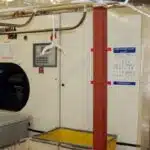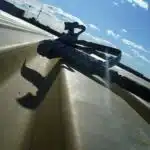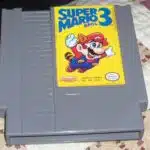Removing spray paint can be a tedious task, but it is one that must be done with care and precision. As a professional graffiti removal technician, I have encountered numerous cases where individuals have tried to remove spray paint on their own, only to cause further damage to the surface they were trying to clean. With the right tools and techniques, however, removing spray paint can be a simple process that yields successful results.
In this article, we will explore the best methods for removing spray paint from various surfaces including walls, metal surfaces, wood surfaces and even clothing. We will also discuss the importance of safety precautions during the removal process and provide tips for preventing future graffiti vandalism. By following these guidelines and applying proper technique, you will not only be able to effectively remove unwanted graffiti but also contribute to keeping your community looking its best.
Understanding The Type Of Surface You’re Dealing With
One of the most crucial steps in removing spray paint is identifying the type of surface you are dealing with. This can be challenging since different surfaces may require different methods and solutions for effective removal. However, this step is essential because it determines the level of care and caution that you need to take when removing the paint.
Identifying surfaces involves assessing various factors such as porosity, texture, and fragility. Some surfaces, such as concrete and metal, are generally easier to clean compared to others like wood or brick. The porosity of the surface also plays a significant role in determining how well it adheres to paint. Generally, non-porous surfaces like metals repel paint better than porous ones like wood.
Another critical factor to consider when removing spray paint is paint compatibility. This refers to whether the removal method or solution used will react adversely with the underlying surface or cause further damage. For instance, using an abrasive solution on a fragile surface may lead to scratches and chips that are more difficult to repair than just leaving the graffiti intact. Therefore, understanding these factors is vital in ensuring that you choose an appropriate removal technique that does not harm your surfaces further.
Understanding the type of surface you are dealing with is crucial in determining how best to remove spray paint effectively. Identifying surfaces involves assessing various factors such as porosity and fragility while considering potential damage from any removal methods or solutions used. In summary, this step is essential since it ensures that you choose an appropriate cleaning technique that does not cause unnecessary harm or further damage to your property before proceeding with gathering the right tools and supplies.
Gathering The Right Tools And Supplies
As a professional graffiti removal technician, choosing the appropriate solvents and tools is essential for successful paint removal. There are several types of solvents available in the market that are specifically formulated to remove spray paints. It is important to choose the right solvent that is safe for the surface and does not cause any damage. For example, if you are removing paint from a wooden surface, it is recommended to use a solvent that is suitable for wood.
Once you have selected the appropriate solvent, it’s time to start scrubbing. Effective scrubbing can make all the difference in removing spray paint. It is important to use a gentle but firm technique on delicate surfaces such as glass or plastic, while applying more pressure on tougher surfaces like concrete or brick. Use a scrubbing brush with nylon bristles and avoid using wire brushes as they may cause scratches.
Remember that patience and persistence are key when it comes to removing spray paint. It may take multiple attempts before achieving complete removal. In addition, always wear protective gear such as gloves and goggles while working with solvents. By following these tips for effective scrubbing and choosing appropriate solvents, you can successfully remove unwanted spray paint from any surface.
Transition into the subsequent section: Before starting the removal process, it is crucial to prepare the area properly to avoid any further damage or contamination.
Preparing The Area For Removal
To effectively remove spray paint, it is important to start by gathering the right tools and supplies. But before we begin with the actual removal process, we need to take protective measures and prepare the area. This involves assessing the surface that needs to be cleaned and ensuring that everything around it is safe from damage.
Surface assessment is crucial in determining the best method for removing spray paint. Some surfaces may require a more gentle approach, such as using a soft-bristled brush or mild cleaning solution, while others may need a more aggressive technique like sandblasting or pressure washing. It’s also important to identify any potential hazards in the surrounding area, such as electrical wires or fragile objects that could be damaged during the process.
Once we have assessed the surface and identified potential hazards, we can proceed with cleaning up while taking necessary safety precautions. This includes wearing protective gear such as gloves, goggles, and respirators to prevent exposure to harmful chemicals or particles. We should also use caution when handling any tools or equipment involved in the removal process, making sure they are used properly and stored away safely after use.
To ensure safe and effective removal of spray paint, proper preparation is key. By taking protective measures before starting and carefully assessing the surface to determine the best approach, we can clean up with confidence knowing that both ourselves and our surroundings are protected. In order to further protect ourselves during this process, it is essential that we wear appropriate protective gear at all times.
Wearing Protective Gear
As a professional graffiti removal technician, it is your responsibility to ensure that you are wearing the appropriate protective gear before starting any job. Spray paint removal can be a hazardous task, and there are several safety precautions that must be taken to prevent harm to oneself or others. Therefore, wearing protective gear is not only essential but also mandatory.
Before commencing any spray paint removal job, make sure you are equipped with gloves, goggles, respirator mask, and a full-body suit. The full-body suit should cover your entire body and should be made of durable material that is resistant to chemicals. Gloves should also be made of chemical-resistant material such as nitrile or latex coated gloves. Goggles must have side shields to protect the eyes from any splashes of chemicals.
In addition to the above-mentioned safety measures, it is also important to ensure that you have proper ventilation while working on a spray paint removal job. Proper ventilation will help in preventing inhalation of harmful fumes and particles generated during the process. Always remember that taking safety precautions seriously can go a long way in ensuring your well-being and those around you.
Moving forward, choosing the right method for removing spray paint from surfaces depends on various factors such as surface type, age of the graffiti, location of graffiti etc. Let’s explore how you can choose the right method for removing spray paint in our next section without compromising safety measures.
Choosing The Right Method For Removal
Did you know that graffiti costs the United States over $12 billion annually in damage and cleanup expenses? This staggering statistic highlights the importance of removing graffiti as soon as possible. As a professional graffiti removal technician, I have seen firsthand the effectiveness of various paint removal techniques.
When choosing the right method for removing graffiti, it’s important to consider the type of surface and the severity of the damage. Here are three options to consider:
- Pressure washing: This technique involves using high-pressure water to remove paint from surfaces such as concrete or brick. It’s a quick and effective method for light to moderate graffiti.
- Sandblasting: For tougher stains on more durable surfaces like metal or stone, sandblasting may be necessary. This process involves blasting fine sand particles at high speeds to remove paint.
- Chemical solvents: When faced with particularly stubborn stains, chemical solvents can be used. Be cautious when using these products, as they can cause damage to some surfaces and should only be used by professionals.
Removing graffiti is a task that requires both skill and care. By choosing the best paint removal technique for your specific situation, you can achieve optimal results without causing any further harm to your property. In the next section, we will discuss using chemical solvents for tough stains.
Using Chemical Solvents For Tough Stains
- When choosing the right solvent to remove spray paint, it is important to consider the type of paint that needs to be removed, the substrate it is on and the environment the work is being done in.
- It is advisable to use the least aggressive solvent for the quickest, safest and most cost effective result.
- When applying the chosen solvent, the technician should ensure that adequate protection is worn (e.g. gloves, respirator mask) and that the area is well ventilated.
- The solvent should be applied to the spray paint in a controlled manner, ensuring that it does not spread to surrounding areas or cause any further damage.
Choosing The Right Solvent
In graffiti removal, using the right solvent is crucial for effective stain removal. As a professional graffiti removal technician, I understand the importance of choosing the right solvent to ensure that the job is done efficiently and safely. When dealing with tough stains like spray paint, it’s essential to consider Solvent safety and Eco-friendly options.
Solvent safety should always come first when selecting a solvent for removing spray paint. Some solvents can be hazardous to your health or cause damage to the surface you’re working on if not handled correctly. Therefore, it’s crucial to choose a solvent that is safe for both you and the surface being cleaned. Always read the label instructions carefully before using any product, and wear protective gear such as gloves and goggles.
Eco-friendly options are an excellent choice when selecting solvents for graffiti removal. They are environmentally friendly and do not harm humans or animals, making them ideal for residential areas where there are children or pets around. Some eco-friendly solvents work well in removing tough stains like spray paint without causing any harm to the surface being cleaned. When selecting an eco-friendly option, always check if it is certified by a recognized authority such as EPA or Green Seal.
Note: It’s important to test any solvent on an inconspicuous area before applying it to the entire stained area. This will help determine if it will damage or discolor the surface being cleaned.
Applying The Solvent
As a professional graffiti removal technician, applying the solvent is a crucial step in removing tough stains like spray paint. After selecting the right solvent for the job, it’s important to handle it with care and wear protective gloves to avoid any skin contact. Applying the solvent correctly requires using the appropriate amount of pressure, depending on the surface being cleaned.
When applying the solvent, it’s essential to use the right pressure to ensure that it penetrates deep into the stain without damaging or discoloring the surface being cleaned. For instance, when dealing with porous surfaces such as brick or concrete, using low-pressure application methods like brushing or rolling will help prevent damage to these surfaces. On non-porous surfaces like metal or glass, high-pressure application methods can be used to remove tough stains effectively.
Additionally, applying solvents in layers can be beneficial in removing stubborn stains. This allows ample time for the solvent to penetrate and loosen up the stain before wiping it off. It’s important not to rush through this process because some stains may require several applications of solvents before they are entirely removed. With proper application techniques and patience, even tough stains like spray paint can be removed safely and efficiently.
Applying Heat For Metal Surfaces
When it comes to removing spray paint from metal surfaces, applying heat can be an effective method. However, there are certain safety concerns that must be taken into account. It is important to use the proper equipment and techniques to ensure a safe and successful removal process.
One of the most common tools used for heat application is a heat gun. This device emits hot air that softens the paint, making it easier to remove. Another technique involves using a blowtorch or propane torch to heat up the surface before scraping away the paint. It is crucial to follow safety guidelines when using these tools, including wearing protective gear and avoiding flammable materials.
While applying heat can be helpful in removing spray paint from metal surfaces, there are also challenges to consider. It is important to avoid overheating or damaging the metal during the removal process. Additionally, some paints may require different temperatures or techniques for successful removal. By taking precautions and using proper techniques, however, it is possible to efficiently remove spray paint from metal surfaces without causing damage.
Transition: Now that we’ve explored how applying heat can aid in removing spray paint from metal surfaces while minimizing damage, let’s move on to another surface type: wood. In order to effectively remove spray paint from wooden surfaces without compromising their integrity, sanding may be necessary.
Sanding For Wood Surfaces
Applying heat is a great way to remove spray paint from metal surfaces, but what about other materials? According to a recent survey, 39% of graffiti removal requests involve non-metal surfaces such as wood and concrete. As a professional graffiti removal technician, it’s important to have alternative methods for these surfaces.
For wood surfaces, sanding is an effective method for removing spray paint. Here are some tips for successful stain removal:
- Use a coarse grit sandpaper to begin with and gradually move to finer grits
- Sand in the direction of the grain
- Keep the sander moving at all times to avoid creating dents or grooves in the wood
- Be sure to wear protective goggles and a dust mask
- Finish by applying a sealer or stain to protect the wood
When it comes to concrete surfaces, scraping can be an effective method for removing spray paint. It’s important to use proper tools and techniques:
- Use a scraper with a wide blade for maximum coverage
- Apply pressure evenly while scraping
- Be careful not to damage the surface beneath the paint
- Wear protective gloves and eyewear
- Consider using chemical solvents in combination with scraping for tough stains
As professional graffiti removal technicians, we must be equipped with various techniques for different surfaces. With alternative methods such as sanding and scraping, we can successfully remove spray paint from non-metal surfaces without causing damage. Next up, we’ll discuss another effective method: scraping for walls and concrete surfaces.
Scraping For Walls And Concrete Surfaces
Scraping techniques are commonly used by graffiti removal technicians to remove spray paint from walls and concrete surfaces. This method is highly effective, especially on flat or smooth surfaces that do not have intricate designs. Scraping involves the use of a scraper or a blade to remove the layers of paint from the surface gradually. It is important to note that this technique requires patience and care to avoid damaging the underlying surface.
Removing stubborn stains can be a challenge when scraping off spray paint. To overcome this challenge, technicians use specialized chemicals that help dissolve the paint layers, making them easier to scrape off. These chemicals are often harsh, requiring proper protective gear when handling them. Moreover, it is important to follow the manufacturer’s instructions when using these chemicals to ensure optimal results while maintaining safety.
After scraping off all visible paint layers, there may still be some remaining stains on the surface. Removing these stains requires additional steps such as scrubbing using a stiff-bristled brush and applying solvents that dissolve any remaining pigments in the stain. The combination of scraping and removing stubborn stains ensures that walls and concrete surfaces are clean with no visible traces of graffiti.
Moving onto our next section about using pressure washing for large areas, it is important to understand how this technique can help clean larger areas more efficiently without causing damage or leaving behind any residue.
Using Pressure Washing For Large Areas
When it comes to removing spray paint from large areas, pressure washing can be an effective solution. However, safety should always be a top priority when using a pressure washer. It is important to wear protective gear such as goggles and gloves, and to never aim the pressure washer at people or animals.
To ensure the best results when pressure washing, it is important to use the proper techniques. Begin by testing a small area of the surface to be cleaned to avoid any damage. Use a wide-angle nozzle and hold the wand at a 45-degree angle to avoid damaging the surface. Start with a low-pressure setting and gradually increase as needed. Always move in consistent strokes, overlapping each pass for complete coverage.
Overall, using pressure washing for large areas can be an efficient way to remove spray paint. However, it is crucial to prioritize safety and use proper techniques for best results. With these precautions in mind, anyone can become proficient in graffiti removal through pressure washing.
As important as removing paint stains from surfaces is treating clothing stains left behind during removal efforts. By following specific steps, one can return clothing items back into their original state without much hassle or waste of time.
Treating Clothing Stains
After pressure washing large areas, it’s essential to remove any remaining spray paint stains. As a professional graffiti removal technician, I have encountered various types of spray paints and surfaces that require different techniques for effective removal. Here are some tips for removing spray paint from different surfaces.
- For metal surfaces, use a solvent-based cleaner like acetone or lacquer thinner. Apply the solution to a clean cloth and wipe the surface until the paint is removed.
- For wood surfaces, use a mixture of baking soda and water or vinegar and water. Apply the solution to the affected area and scrub with a brush until the paint comes off.
- For concrete surfaces, use a pressure washer with hot water and high-pressure settings. The heat helps to soften the paint while the pressure removes it from the surface.
- For plastic materials, use rubbing alcohol or nail polish remover on a cloth and gently rub away the paint.
It’s important to note that while removing spray paint, one should take precautions to prevent fading of colors on nearby surfaces. Cover surrounding areas with plastic sheeting or painter’s tape before starting work.
As much as we try to avoid it, clothing stains are inevitable during graffiti removal jobs. Choosing detergent is crucial in ensuring that they come out clean without damaging fabric fibers. When treating clothing stains, consider using mild detergents that contain enzymes that break down protein-based stains like blood or grass.
Cleaning up the work area after completing graffiti removal is just as important as removing spray paint stains from surfaces. Dispose of any remaining chemicals safely and follow proper waste disposal guidelines in your area. By doing so, you not only protect yourself but also contribute towards maintaining a safe environment for everyone around you.
Cleaning Up The Work Area
Following the removal of spray paint, it is important to clean up the work area properly to minimize any mess. Start by wiping down all surfaces with a damp cloth or sponge to remove any remaining paint residue. Dispose of any disposable materials used during the process, such as gloves or rags, in a proper waste container.
Additionally, it is crucial to dispose of any paint waste appropriately. Avoid pouring excess paint down drains or dumping it in the trash. Instead, take it to a hazardous waste disposal facility or contact your local municipality for guidance on proper disposal methods.
To further minimize mess and make future clean-up easier, consider laying down plastic sheets or tarps before beginning the removal process. This will catch any stray paint and make it simple to dispose of once finished. By following these tips and properly disposing of all waste materials, you can ensure a clean and safe work area after removing spray paint.
To prevent future graffiti vandalism, it is important to take proactive measures such as installing security cameras or motion-activated lighting. Additionally, regular upkeep and maintenance of surfaces can deter vandals from targeting your property again. Consider applying anti-graffiti coatings that make it difficult for spray paint to adhere to surfaces, making future removal processes easier and less time-consuming.
Preventing Future Graffiti Vandalism
After cleaning up the work area, it is important to address the root of the problem by preventing future graffiti vandalism. Community engagement can be a powerful tool in reducing instances of graffiti. Educating the community about the negative effects of graffiti on property values and safety can motivate them to report any suspicious activity or taggings they observe.
Another effective approach is to make use of legal consequences. Most cities have laws against graffiti vandalism and those caught in the act can face fines and even imprisonment. By making an example out of these vandals, others may think twice before engaging in similar behavior. It is also important for property owners to promptly remove any graffiti as it sends a message that this type of behavior will not be tolerated.
In some cases, removing spray paint requires more than just elbow grease and a few household supplies. Seeking professional help when needed can save time, money, and avoid damaging surfaces beyond repair. Professional technicians are equipped with specialized tools and chemicals that can safely remove even stubborn layers of paint without causing harm to the underlying surface. Don’t hesitate to reach out for assistance if you encounter a situation beyond your capabilities.
Seeking Professional Help When Needed
As a professional graffiti removal technician, I have seen my fair share of DIY mistakes when it comes to removing spray paint. While many individuals may feel confident in their ability to remove unwanted tags and marks from their property, there are certain situations where it is best to call in the professionals.
According to a recent study conducted by the American Graffiti Removal Association, over 60% of DIY attempts at removing spray paint result in further damage and expense. This is due to a variety of factors, including improper cleaning techniques, using the wrong chemicals, and not having access to specialized equipment.
When to call for professional help? If you find yourself struggling to remove stubborn spray paint stains, or if the damage is extensive and beyond your capabilities, it is best to seek the help of professional graffiti removal technicians. Not only can we safely and effectively remove unwanted tags and marks from your property, but we can also provide preventative measures to help keep your property looking its best for years to come.
In conclusion, while there are certainly some situations where DIY spray paint removal may be successful, it is important to recognize when it is time to call in the professionals. By avoiding common mistakes and knowing when expert intervention is necessary, you can save yourself time, money, and frustration in the long run. Now that we’ve discussed seeking professional help when needed let’s move on celebrating your success in removing spray paint!
Celebrating Your Success In Removing Spray Paint!
As a professional graffiti removal technician, your ultimate goal is to remove spray paint from various surfaces. After following the proper steps and using the appropriate materials, it’s time to celebrate your success in removing the unwanted graffiti! Success stories are always worth sharing, especially if they lead to more positive results.
One creative cover-up method is to use the same color of paint as the original surface and blend it seamlessly with the existing paint. This technique can be used on walls, fences, or other surfaces where painted over graffiti may not be an option. Another method is to create a mural or artwork in place of the graffiti. This approach not only covers up the unwanted spray paint but also adds something beautiful and meaningful for others to appreciate.
Removing spray paint can be an arduous task, but with patience and persistence, you can achieve exceptional results. Always remember that every job is unique, and there’s no one-size-fits-all solution. Celebrate each success story as a testament to your dedication and effort in serving others by removing unsightly graffiti from their communities.
- Use high-quality cleaning agents that are specifically designed for removing spray paint.
- Always test a small area first before applying any cleaning agent.
- Wear protective gear such as gloves, goggles, and breathing masks when removing spray paint.
Conclusion
Removing spray paint can be a daunting task, but with the right tools and techniques, it can be accomplished successfully. Understanding the type of surface you’re dealing with is crucial in determining the best method for removal. Gathering the necessary tools and supplies, preparing the area for removal, wearing protective gear, and choosing the appropriate method are all important steps in effectively removing spray paint.
Once the graffiti has been removed, it’s important to clean up the work area and take preventative measures to avoid future vandalism. Seeking professional help may also be necessary in some cases. As a professional graffiti removal technician, I know firsthand how satisfying it can be to see a clean and restored surface after removing unwanted graffiti. By following these steps, anyone can achieve success in removing spray paint from any surface.
Image Credits
- “2006 – awesome SciFi spray-painting Christian & Shannon got in Aruba – 163462992_255db1b761_o (by Christian)” by Claire CJS (featured)





























